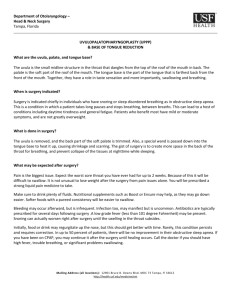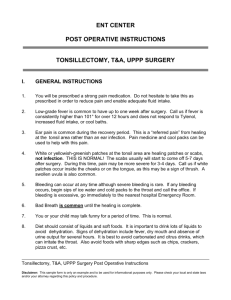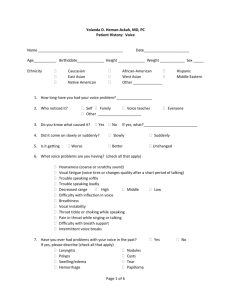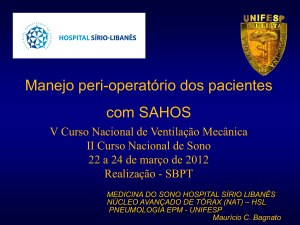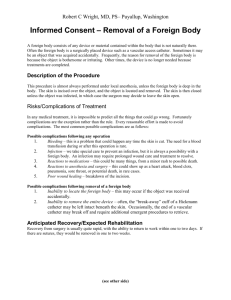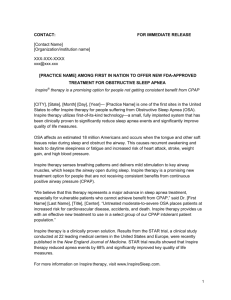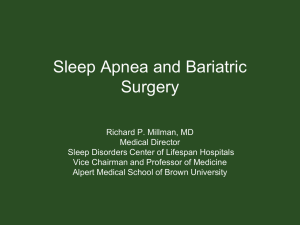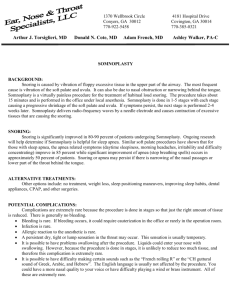Uvulopalatopharyngoplasty (uppp)
advertisement
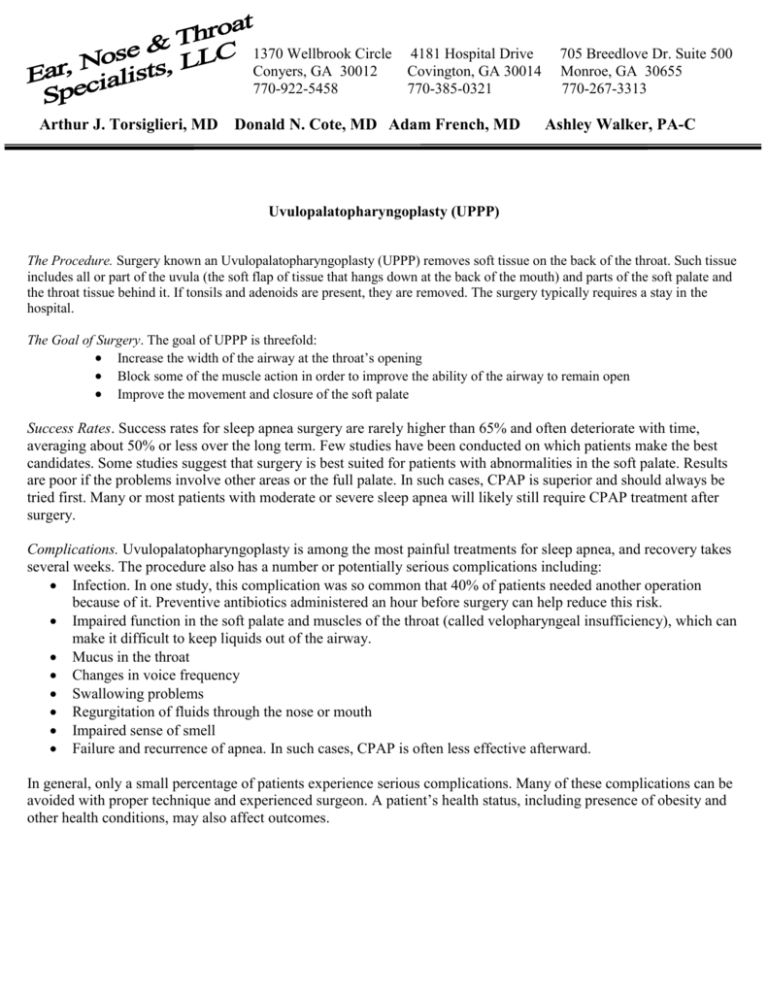
1370 Wellbrook Circle Conyers, GA 30012 770-922-5458 Arthur J. Torsiglieri, MD 4181 Hospital Drive Covington, GA 30014 770-385-0321 Donald N. Cote, MD Adam French, MD 705 Breedlove Dr. Suite 500 Monroe, GA 30655 770-267-3313 Ashley Walker, PA-C Uvulopalatopharyngoplasty (UPPP) The Procedure. Surgery known an Uvulopalatopharyngoplasty (UPPP) removes soft tissue on the back of the throat. Such tissue includes all or part of the uvula (the soft flap of tissue that hangs down at the back of the mouth) and parts of the soft palate and the throat tissue behind it. If tonsils and adenoids are present, they are removed. The surgery typically requires a stay in the hospital. The Goal of Surgery. The goal of UPPP is threefold: Increase the width of the airway at the throat’s opening Block some of the muscle action in order to improve the ability of the airway to remain open Improve the movement and closure of the soft palate Success Rates. Success rates for sleep apnea surgery are rarely higher than 65% and often deteriorate with time, averaging about 50% or less over the long term. Few studies have been conducted on which patients make the best candidates. Some studies suggest that surgery is best suited for patients with abnormalities in the soft palate. Results are poor if the problems involve other areas or the full palate. In such cases, CPAP is superior and should always be tried first. Many or most patients with moderate or severe sleep apnea will likely still require CPAP treatment after surgery. Complications. Uvulopalatopharyngoplasty is among the most painful treatments for sleep apnea, and recovery takes several weeks. The procedure also has a number or potentially serious complications including: Infection. In one study, this complication was so common that 40% of patients needed another operation because of it. Preventive antibiotics administered an hour before surgery can help reduce this risk. Impaired function in the soft palate and muscles of the throat (called velopharyngeal insufficiency), which can make it difficult to keep liquids out of the airway. Mucus in the throat Changes in voice frequency Swallowing problems Regurgitation of fluids through the nose or mouth Impaired sense of smell Failure and recurrence of apnea. In such cases, CPAP is often less effective afterward. In general, only a small percentage of patients experience serious complications. Many of these complications can be avoided with proper technique and experienced surgeon. A patient’s health status, including presence of obesity and other health conditions, may also affect outcomes.
